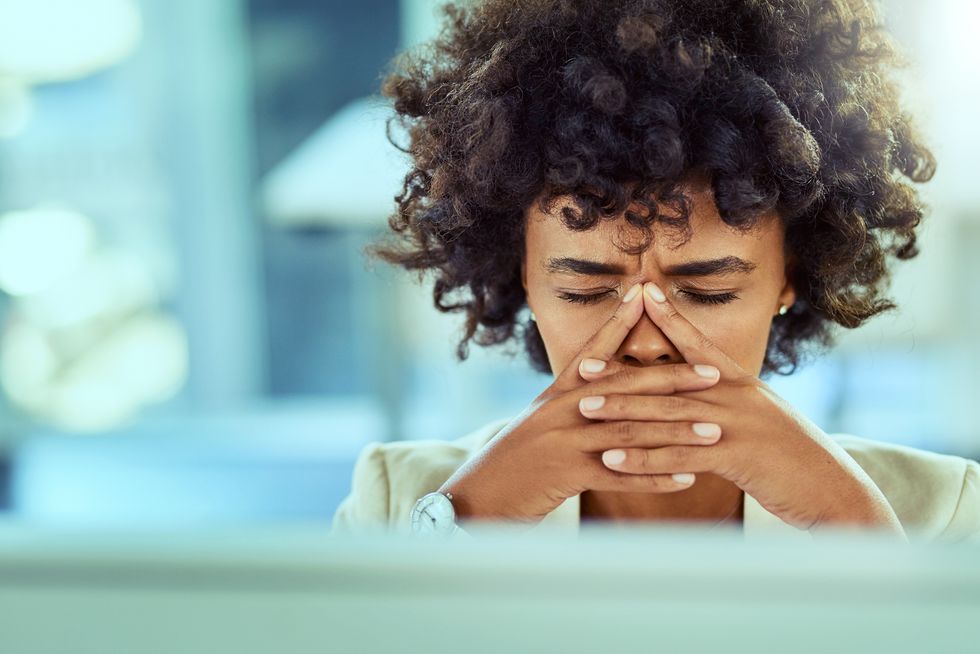When something stands in the way of you being the best version of yourself, it often becomes a priority to squash it, fix it—whatever you need to do to improve your quality of life.
If you suffer from migraines and haven't found a treatment to help manage your symptoms, you are still on the journey to being your best self and living your best life. It can be a long journey, but don't get discouraged.
A recent HealthyWomen survey found that the majority (76 percent) of the 1,005 female respondents between the ages of 18 and 60 years old who have been diagnosed with migraines by a healthcare professional said migraines interfere with their daily activities such as work or school.
Upon completion of the survey, the interference of migraine in these women’s lives was strikingly apparent, with key findings such as:
- Nearly half (48 percent) of respondents have tried four or more migraine treatments
- 91 percent have tried prescription medicine, and 84 percent have tried over-the-counter medication
- Fewer than one in five (18 percent) say they are completely satisfied with their migraine treatment, and nearly nine out of ten people (86 percent) agree (completely or somewhat) that they are willing to try non-drug treatments for their migraines
- About half (51 percent) agree completely that they are willing to try non-drug treatments for their migraines
The good news is that there are non-drug migraine treatments now cleared by the U.S. Food and Drug Administration, including a non-invasive vagus nerve stimulator (nVNS) therapy to treat acute pain associated with migraine.
Here's the thing: Only 36 percent of migraine sufferers are aware of alternative migraine treatments like this, and seeing that a third (33 percent) of migraine sufferers agree that they prefer to avoid medication to treat their migraine headaches, we have some educating to do. So here's everything you need to know about nVNS.
What is nVNS?
There is only one FDA cleared nVNS device. This therapy is non-invasive and hand-held—not an injection, surgical implant or pill—and gently stimulates the vagus nerve through the skin on your neck.
What's so important about the vagus nerve?
The vagus nerve is an important highway of communication between your brain and many parts of the body, and plays an important role in regulating pain.
How does nVNS work?
It works with your body to help regulate pain and allows you to avoid many common unwanted side effects that come with pharmaceutical, migraine-pain management options.
Is nVNS effective?
When used at the first sign of a migraine, nVNS can help relieve your pain fast so you can start your journey back to living your life to the fullest. In fact, many patients found relief within 30 minutes of using.
Is nVNS safe?
nVNS safety has been demonstrated in several clinical trials. Patients treated with nVNS did not experience any serious side effects. Most side effects are mild, occur during use of the device, and go away quickly after each treatment.
nVNS may not be for everyone, such as patients with an active implantable medical device (pacemaker, hearing aid implant, or any implanted electronic device). If you get migraines, ask your neurologist or health care professional about nVNS to treat migraine pain. Also, check out this woman's story about how she discovered the power to control her migraines and take her life back using nVNS.
- Dealing With Migraines Is More Art Than Science ›
- Botox and Migraine: What You Need to Know ›
- Migraine Hub - HealthyWomen ›
- When It's More Than Just a Bad Headache ›
- Most People Who Experience Migraine Are Women: Here’s What You Need to Know ›
- Don't Lose Hope in Your Battle With Migraine ›
- Self-Care for Migraines - HealthyWomen ›
- Cuidados personales para migrañas - HealthyWomen ›
- How I Discovered the Power to Control My Migraines - HealthyWomen ›
- Managing the Workspace with Migraine - HealthyWomen ›
- We Need to Raise Awareness of Migraines in the Workplace - HealthyWomen ›







